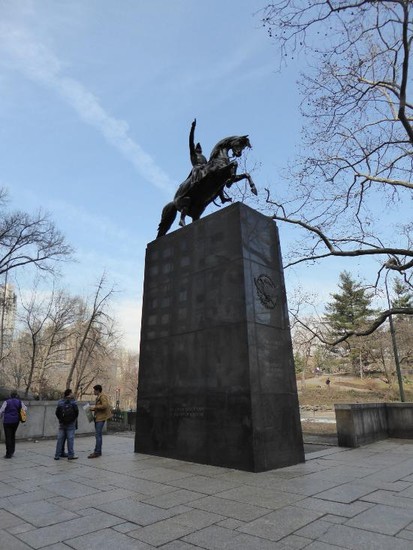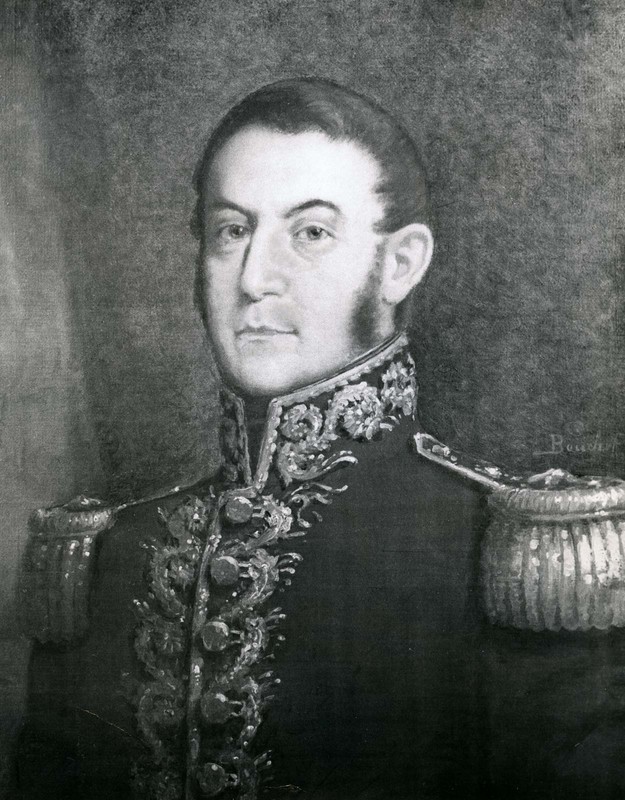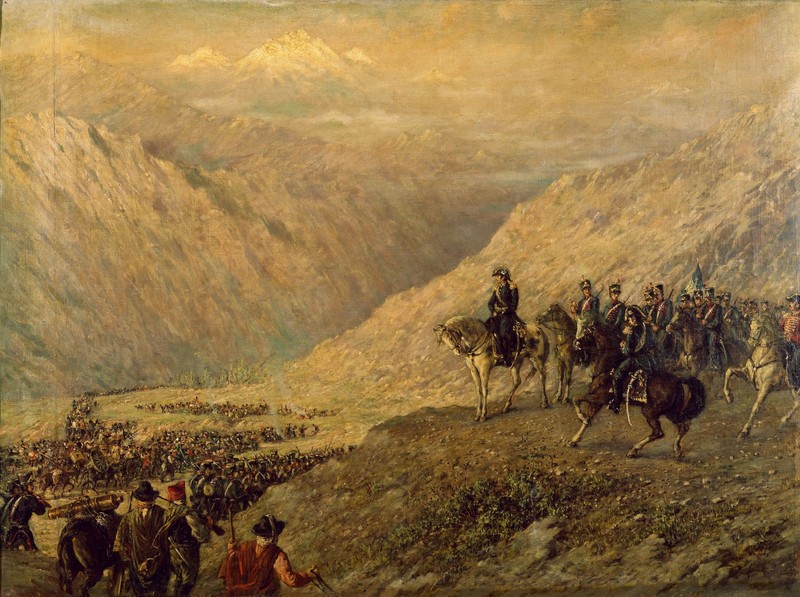José de San Martín Statue
Introduction
Text-to-speech Audio
Images
José de San Martín Statue

José de San Martín (1778-1850)

"The Andes Pass" by Augusto Ballerini depicting San Martín and his army crossing the Andes (1890)

Backstory and Context
Text-to-speech Audio
José de San Martín was born to Spanish parents in the small town of Yapeyú in what is now Argentina on February 25, 1778. His father, Juan de San Martín, was a soldier and colonial administrator. When he was six years old, he and his family moved to Spain. In 1785, San Martín enrolled in the Seminary of Nobles in Madrid. Four years later, he commenced his military career in the Murcia Infantry Regiment. While serving with the unit, San Martín fought against the Moors in North Africa in 1791, the British in 1798, and the Portuguese in the War of the Oranges in 1801. While fighting the British, he was captured and held as a prisoner of war for more than a year. For his service to the Spanish crown, San Martín received a promotion to the rank of captain in 1804. After Napoleon’s invasion of Spain in 1807 and the subsequent ouster of the Spanish monarch, San Martín supported the Spanish resistance and fought against the French occupation. After the Battle of Bailén in 1808, he was promoted to the rank of lieutenant colonel. Three years later, following the Battle of Albuera, San Martín was assigned to command a cavalry unit.
Rather than accept the new command, San Martín left Spain, traveling first to Great Britain and then to Buenos Aires, which at the time was the center of the South American independence movement. There, he offered his services to the revolutionary government and, in 1812, began recruiting and training an army to fight royalist forces and help liberate his native land from Spanish rule. San Martín’s motivations for deciding to take up arms against the country that he had served for more than two decades are unclear. Born not in Spain, but rather a small town located within its vast overseas empire, he—some historians argue—felt a stronger connection to the people of his native land than to those of the mother country. San Martín may also have been inspired by Spaniards’ resistance to Napoleon’s invasion and occupation of their homeland. Still other historians argue that San Martín came in contact with British sympathizers of the independence movement in South America, either while fighting the French in Spain or while in living in London, who persuaded him to change his allegiance.
Regardless of his motivations, San Martín proved a vital asset to the movement. His most remarkable accomplishment came in early 1817. In January and February of that year, San Martín did the unimaginable when he crossed the Andes with his army, a feat often compared to Hannibal’s crossing of the Alps. Soon after, he defeated royalist forces at Chacabuco and then took the city of Santiago. Over the course of the subsequent year, San Martín defeated the remaining royalist forces in Chile, delivering the final blow at the Battle of Maipú on April 5, 1818. With Chile liberated, he sailed to Peru. Pressed by San Martín’s army, royalist forces in Lima eventually withdrew to the surrounding mountains. San Martín then entered Lima and Peruvian independence was declared on July 28, 1821. A year later, he met with Simón Bolívar in the town of Guayaquil in what is now Bolivia. Exactly what was agreed upon at the secret meeting between the two military leaders in unknown. Following the meeting, however, San Martín resigned his post and returned to Europe, where he lived out his remaining years in poverty. He died in Boulogne-sur-Mer, France in 1850.
In 1950, in exchange for a statue of George Washington sent to it by the United States, the City of Buenos Aires gifted a bronze equestrian statue of San Martín to the City of New York. A smaller replica of the one designed by French sculptor Louis-Joseph Daumas and erected in Buenos Aires in 1862, the statue was dedicated on May 25, 1951. In 1995, the Central Park Conservancy, with financial help from the Argentine government, conducted a full restoration effort on the statue. Today, it is one of three equestrian statues in Central Park (along with that of Simón Bolívar and José Martí) that honor important figures in Latin American history.
Sources
"General José de San Martín." New York City Department of Parks and Recreation. The City of New York. Web. 17 November 2020 <https://www.nycgovparks.org/parks/central-park/monuments/1395>.
"José de San Martín." Central Park Conservancy. Web. 17 November 2020 <https://www.centralparknyc.org/locations/jose-de-san-martin>.
"José de San Martín." Encyclopaedia Britannica. Web. 17 November 2020 <https://www.britannica.com/biography/Jose-de-San-Martin>.
https://www.tripadvisor.com/Attraction_Review-g60763-d8667343-Reviews-Monumento_General_Jose_de_San_Martin-New_York_City_New_York.html
https://www.britannica.com/biography/Jose-de-San-Martin
https://www.britannica.com/biography/Jose-de-San-Martin/Campaign-across-the-Andes
